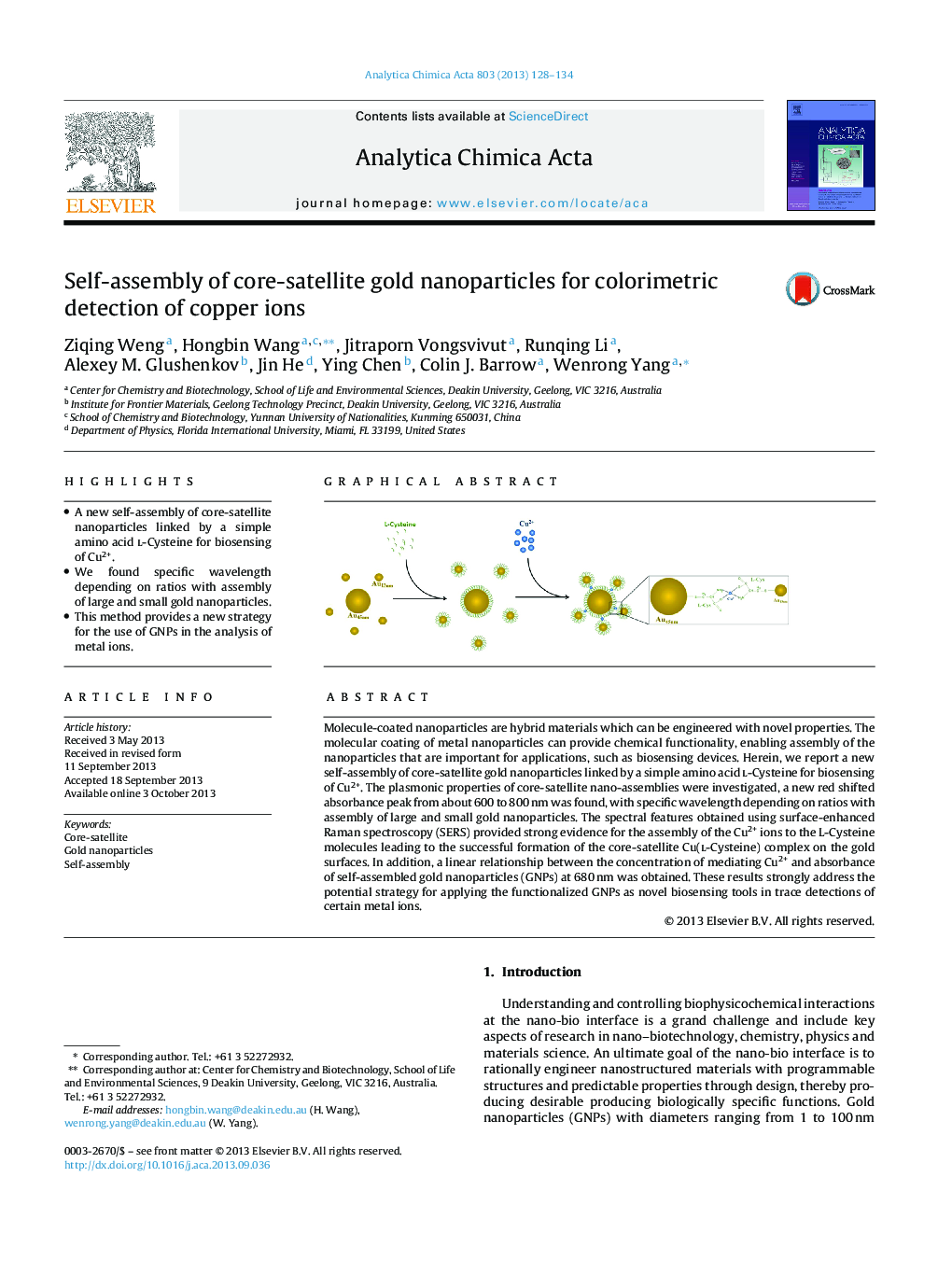| Article ID | Journal | Published Year | Pages | File Type |
|---|---|---|---|---|
| 1164345 | Analytica Chimica Acta | 2013 | 7 Pages |
•A new self-assembly of core-satellite nanoparticles linked by a simple amino acid l-Cysteine for biosensing of Cu2+.•We found specific wavelength depending on ratios with assembly of large and small gold nanoparticles.•This method provides a new strategy for the use of GNPs in the analysis of metal ions.
Molecule-coated nanoparticles are hybrid materials which can be engineered with novel properties. The molecular coating of metal nanoparticles can provide chemical functionality, enabling assembly of the nanoparticles that are important for applications, such as biosensing devices. Herein, we report a new self-assembly of core-satellite gold nanoparticles linked by a simple amino acid l-Cysteine for biosensing of Cu2+. The plasmonic properties of core-satellite nano-assemblies were investigated, a new red shifted absorbance peak from about 600 to 800 nm was found, with specific wavelength depending on ratios with assembly of large and small gold nanoparticles. The spectral features obtained using surface-enhanced Raman spectroscopy (SERS) provided strong evidence for the assembly of the Cu2+ ions to the L-Cysteine molecules leading to the successful formation of the core-satellite Cu(l-Cysteine) complex on the gold surfaces. In addition, a linear relationship between the concentration of mediating Cu2+ and absorbance of self-assembled gold nanoparticles (GNPs) at 680 nm was obtained. These results strongly address the potential strategy for applying the functionalized GNPs as novel biosensing tools in trace detections of certain metal ions.
Graphical abstractFigure optionsDownload full-size imageDownload as PowerPoint slide
